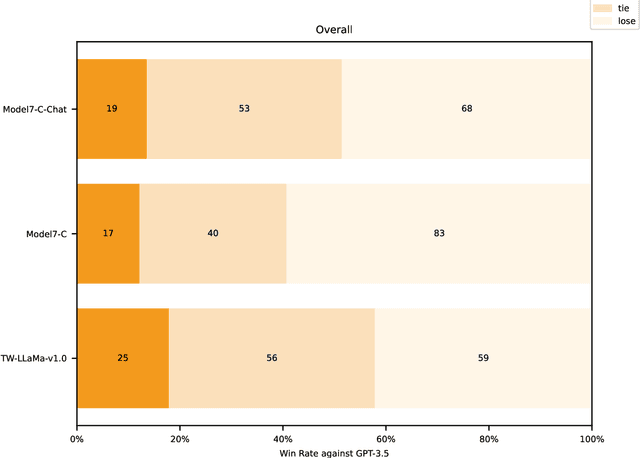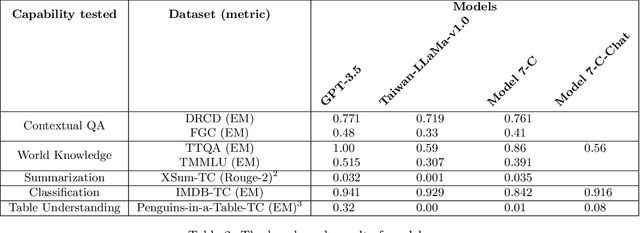Feng-Ting Liao
Rethinking the shape convention of an MLP
Oct 02, 2025Abstract:Multi-layer perceptrons (MLPs) conventionally follow a narrow-wide-narrow design where skip connections operate at the input/output dimensions while processing occurs in expanded hidden spaces. We challenge this convention by proposing wide-narrow-wide (Hourglass) MLP blocks where skip connections operate at expanded dimensions while residual computation flows through narrow bottlenecks. This inversion leverages higher-dimensional spaces for incremental refinement while maintaining computational efficiency through parameter-matched designs. Implementing Hourglass MLPs requires an initial projection to lift input signals to expanded dimensions. We propose that this projection can remain fixed at random initialization throughout training, enabling efficient training and inference implementations. We evaluate both architectures on generative tasks over popular image datasets, characterizing performance-parameter Pareto frontiers through systematic architectural search. Results show that Hourglass architectures consistently achieve superior Pareto frontiers compared to conventional designs. As parameter budgets increase, optimal Hourglass configurations favor deeper networks with wider skip connections and narrower bottlenecks-a scaling pattern distinct from conventional MLPs. Our findings suggest reconsidering skip connection placement in modern architectures, with potential applications extending to Transformers and other residual networks.
Latent Flow Transformer
May 20, 2025Abstract:Transformers, the standard implementation for large language models (LLMs), typically consist of tens to hundreds of discrete layers. While more layers can lead to better performance, this approach has been challenged as far from efficient, especially given the superiority of continuous layers demonstrated by diffusion and flow-based models for image generation. We propose the Latent Flow Transformer (LFT), which replaces a block of layers with a single learned transport operator trained via flow matching, offering significant compression while maintaining compatibility with the original architecture. Additionally, we address the limitations of existing flow-based methods in \textit{preserving coupling} by introducing the Flow Walking (FW) algorithm. On the Pythia-410M model, LFT trained with flow matching compresses 6 of 24 layers and outperforms directly skipping 2 layers (KL Divergence of LM logits at 0.407 vs. 0.529), demonstrating the feasibility of this design. When trained with FW, LFT further distills 12 layers into one while reducing the KL to 0.736 surpassing that from skipping 3 layers (0.932), significantly narrowing the gap between autoregressive and flow-based generation paradigms.
Group Think: Multiple Concurrent Reasoning Agents Collaborating at Token Level Granularity
May 16, 2025Abstract:Recent advances in large language models (LLMs) have demonstrated the power of reasoning through self-generated chains of thought. Multiple reasoning agents can collaborate to raise joint reasoning quality above individual outcomes. However, such agents typically interact in a turn-based manner, trading increased latency for improved quality. In this paper, we propose Group Think--a single LLM that acts as multiple concurrent reasoning agents, or thinkers. With shared visibility into each other's partial generation progress, Group Think introduces a new concurrent-reasoning paradigm in which multiple reasoning trajectories adapt dynamically to one another at the token level. For example, a reasoning thread may shift its generation mid-sentence upon detecting that another thread is better positioned to continue. This fine-grained, token-level collaboration enables Group Think to reduce redundant reasoning and improve quality while achieving significantly lower latency. Moreover, its concurrent nature allows for efficient utilization of idle computational resources, making it especially suitable for edge inference, where very small batch size often underutilizes local~GPUs. We give a simple and generalizable modification that enables any existing LLM to perform Group Think on a local GPU. We also present an evaluation strategy to benchmark reasoning latency and empirically demonstrate latency improvements using open-source LLMs that were not explicitly trained for Group Think. We hope this work paves the way for future LLMs to exhibit more sophisticated and more efficient collaborative behavior for higher quality generation.
Let's Fuse Step by Step: A Generative Fusion Decoding Algorithm with LLMs for Multi-modal Text Recognition
May 23, 2024Abstract:We introduce ``Generative Fusion Decoding'' (GFD), a novel shallow fusion framework, utilized to integrate Large Language Models (LLMs) into multi-modal text recognition systems such as automatic speech recognition (ASR) and optical character recognition (OCR). We derive the formulas necessary to enable GFD to operate across mismatched token spaces of different models by mapping text token space to byte token space, enabling seamless fusion during the decoding process. The framework is plug-and-play, compatible with various auto-regressive models, and does not require re-training for feature alignment, thus overcoming limitations of previous fusion techniques. We highlight three main advantages of GFD: First, by simplifying the complexity of aligning different model sample spaces, GFD allows LLMs to correct errors in tandem with the recognition model, reducing computation latencies. Second, the in-context learning ability of LLMs is fully capitalized by GFD, increasing robustness in long-form speech recognition and instruction aware speech recognition. Third, GFD enables fusing recognition models deficient in Chinese text recognition with LLMs extensively trained on Chinese. Our evaluation demonstrates that GFD significantly improves performance in ASR and OCR tasks, with ASR reaching state-of-the-art in the NTUML2021 benchmark. GFD provides a significant step forward in model integration, offering a unified solution that could be widely applicable to leveraging existing pre-trained models through step by step fusion.
Breeze-7B Technical Report
Mar 05, 2024Abstract:Breeze-7B is an open-source language model based on Mistral-7B, designed to address the need for improved language comprehension and chatbot-oriented capabilities in Traditional Chinese. This technical report provides an overview of the additional pretraining, finetuning, and evaluation stages for the Breeze-7B model. The Breeze-7B family of base and chat models exhibits good performance on language comprehension and chatbot-oriented tasks, reaching the top in several benchmarks among models comparable in its complexity class.
Advancing the Evaluation of Traditional Chinese Language Models: Towards a Comprehensive Benchmark Suite
Oct 02, 2023


Abstract:The evaluation of large language models is an essential task in the field of language understanding and generation. As language models continue to advance, the need for effective benchmarks to assess their performance has become imperative. In the context of Traditional Chinese, there is a scarcity of comprehensive and diverse benchmarks to evaluate the capabilities of language models, despite the existence of certain benchmarks such as DRCD, TTQA, CMDQA, and FGC dataset. To address this gap, we propose a novel set of benchmarks that leverage existing English datasets and are tailored to evaluate language models in Traditional Chinese. These benchmarks encompass a wide range of tasks, including contextual question-answering, summarization, classification, and table understanding. The proposed benchmarks offer a comprehensive evaluation framework, enabling the assessment of language models' capabilities across different tasks. In this paper, we evaluate the performance of GPT-3.5, Taiwan-LLaMa-v1.0, and Model 7-C, our proprietary model, on these benchmarks. The evaluation results highlight that our model, Model 7-C, achieves performance comparable to GPT-3.5 with respect to a part of the evaluated capabilities. In an effort to advance the evaluation of language models in Traditional Chinese and stimulate further research in this field, we have open-sourced our benchmark and opened the model for trial.
Zero-shot Domain-sensitive Speech Recognition with Prompt-conditioning Fine-tuning
Jul 18, 2023Abstract:In this work, we propose a method to create domain-sensitive speech recognition models that utilize textual domain information by conditioning its generation on a given text prompt. This is accomplished by fine-tuning a pre-trained, end-to-end model (Whisper) to learn from demonstrations with prompt examples. We show that this ability can be generalized to different domains and even various prompt contexts, with our model gaining a Word Error Rate (WER) reduction of up to 33% on unseen datasets from various domains, such as medical conversation, air traffic control communication, and financial meetings. Considering the limited availability of audio-transcript pair data, we further extend our method to text-only fine-tuning to achieve domain sensitivity as well as domain adaptation. We demonstrate that our text-only fine-tuned model can also attend to various prompt contexts, with the model reaching the most WER reduction of 29% on the medical conversation dataset.
Meta-Learning with MAML on Trees
Mar 08, 2021



Abstract:In meta-learning, the knowledge learned from previous tasks is transferred to new ones, but this transfer only works if tasks are related. Sharing information between unrelated tasks might hurt performance, and it is unclear how to transfer knowledge across tasks with a hierarchical structure. Our research extends a model agnostic meta-learning model, MAML, by exploiting hierarchical task relationships. Our algorithm, TreeMAML, adapts the model to each task with a few gradient steps, but the adaptation follows the hierarchical tree structure: in each step, gradients are pooled across tasks clusters, and subsequent steps follow down the tree. We also implement a clustering algorithm that generates the tasks tree without previous knowledge of the task structure, allowing us to make use of implicit relationships between the tasks. We show that the new algorithm, which we term TreeMAML, performs better than MAML when the task structure is hierarchical for synthetic experiments. To study the performance of the method in real-world data, we apply this method to Natural Language Understanding, we use our algorithm to finetune Language Models taking advantage of the language phylogenetic tree. We show that TreeMAML improves the state of the art results for cross-lingual Natural Language Inference. This result is useful, since most languages in the world are under-resourced and the improvement on cross-lingual transfer allows the internationalization of NLP models. This results open the window to use this algorithm in other real-world hierarchical datasets.
 Add to Chrome
Add to Chrome Add to Firefox
Add to Firefox Add to Edge
Add to Edge